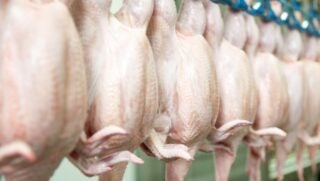The United States and Japan announced they reached an agreement on a trade deal that further opens markets for both countries. Agriculture is among the biggest beneficiaries. While the agreement itself is not yet finished, a statement explaining the agreement was signed Sept. 25, 2019.
Under the agreement, Japan will place the same level of agricultural tariffs on U.S. goods as it places on Comprehensive and Progressive Trans-Pacific Partnership (CPTPP) countries and the EU. By way of example, the 38.5% tariff on U.S. beef will fall to the 26% placed on beef from Australia, Canada, and the EU. Some other foods such as duck, geese, turkey peaches, melons, and more would enter duty-free.
The Japanese Parliament is expected to approve the agreement later this fall. It may take effect as early as Jan. 1, 2020. There is no action by the U.S. Congress necessary, as this is not a full trade agreement that involves substantive changes to existing U.S. law.
American Farm Bureau Federation President Zippy Duvall said,“Today’s announcement that the two countries have reached an agreement and have completed agricultural negotiations is a positive step for America’s farmers and ranchers.
“Japan is American agriculture’s fourth-largest export destination and vital to the livelihood of hundreds of thousands of farms and the families who live on them. We export nearly $13 billion a year in agricultural products to Japan, even as we continue to face steep tariffs on many exports.
“The time for trade wars has come and gone. We are thankful the administration has reached this deal and we urge trade negotiators to achieve many more like it. Farmers and ranchers need to get back to doing what they do best: feeding a hungry world that needs what they produce.”
National Association of Wheat Growers President and Texas farmer Ben Scholz said, “Resolving trade issues like this and building new opportunities for our wheat and other agricultural products is absolutely needed at a time when wheat farmers are dealing with another year of low prices and a depressed farm economy.”
When the tariff agreement is implemented, Japan’s effective tariff on imported U.S. wheat will drop to the same level Japanese flour millers now pay for Canadian and Australian wheat. Since the CPTPP agreement entered into force last December, market factors have kept U.S. wheat competitive. Without this new agreement, however, U.S. wheat imports would have become less and less cost competitive to the point that Japan’s flour millers would have no other choice than to buy more of the lower cost wheat from the CPTPP member countries.


